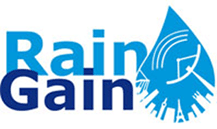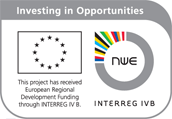Results of rainfall data acquisition and prediction
Some of the main lessons learned on the fine-scale rainfall estimation and nowcasting (RainGain WP2) are the following:
- In traditional approaches for urban rainfall estimation, where use is made of the coarser national C-band radar based rainfall products or where available rain gauges are interpolated, the finer scale features of importance for urban hydrological flood applications are often missing.
- For the low-cost X-band radars, clutter correction and adjustment or calibration (e.g. of Z-R relationship) to rain gauges is very important to remove rainfall estimates biases. A network of rain gauges hence is still needed; such X-band radar cannot fully replace the rain gauge network.
- All adjustment and merging methods improve the applicability of the original radar and rain gauge based rainfall estimates to urban hydrological applications, but the degree of improvement varies for each method. The simple Mean Field Bias adjustment is insufficient for satisfactorily correcting the errors in radar data RD; hence more dynamic and spatially varying adjustment methods are required. At high rain gauge densities, the Kalman filter based and Bayesian methods show very good quantitative performance. At low rain gauge densities, the kriging interpolation methods perform poorly, and the advantage of the newly developed singularity sensitive Bayesian method becomes evident. The latter method allows improvement of the estimation of local extreme rainfall intensities.
- For the low-cost X-band radars, problems with unstable clutter and attenuation of the rainfall signal during periods when the radar radome is wet (when the storm is passing over the radar; the installation of the shelter did not help much) may be severe.



